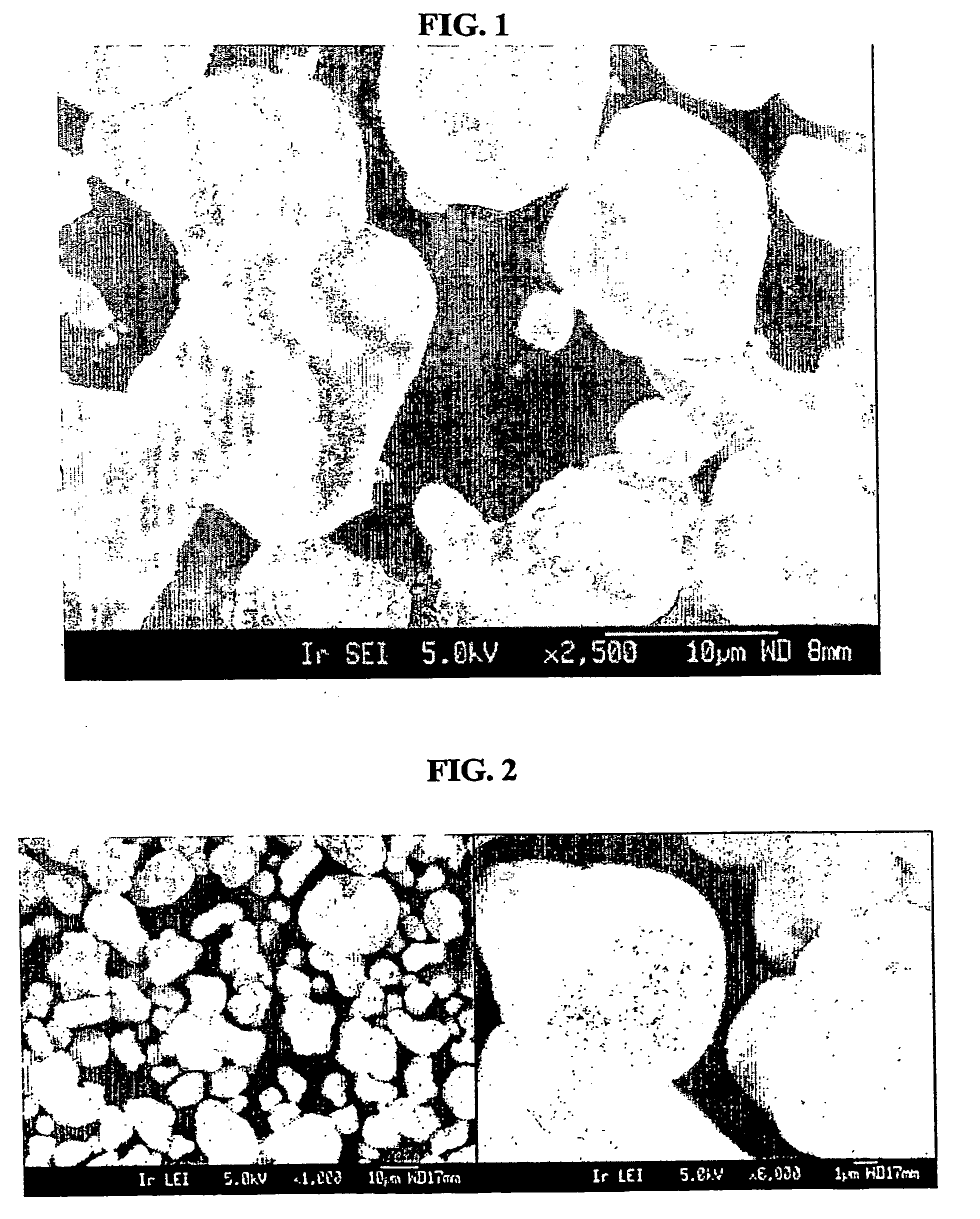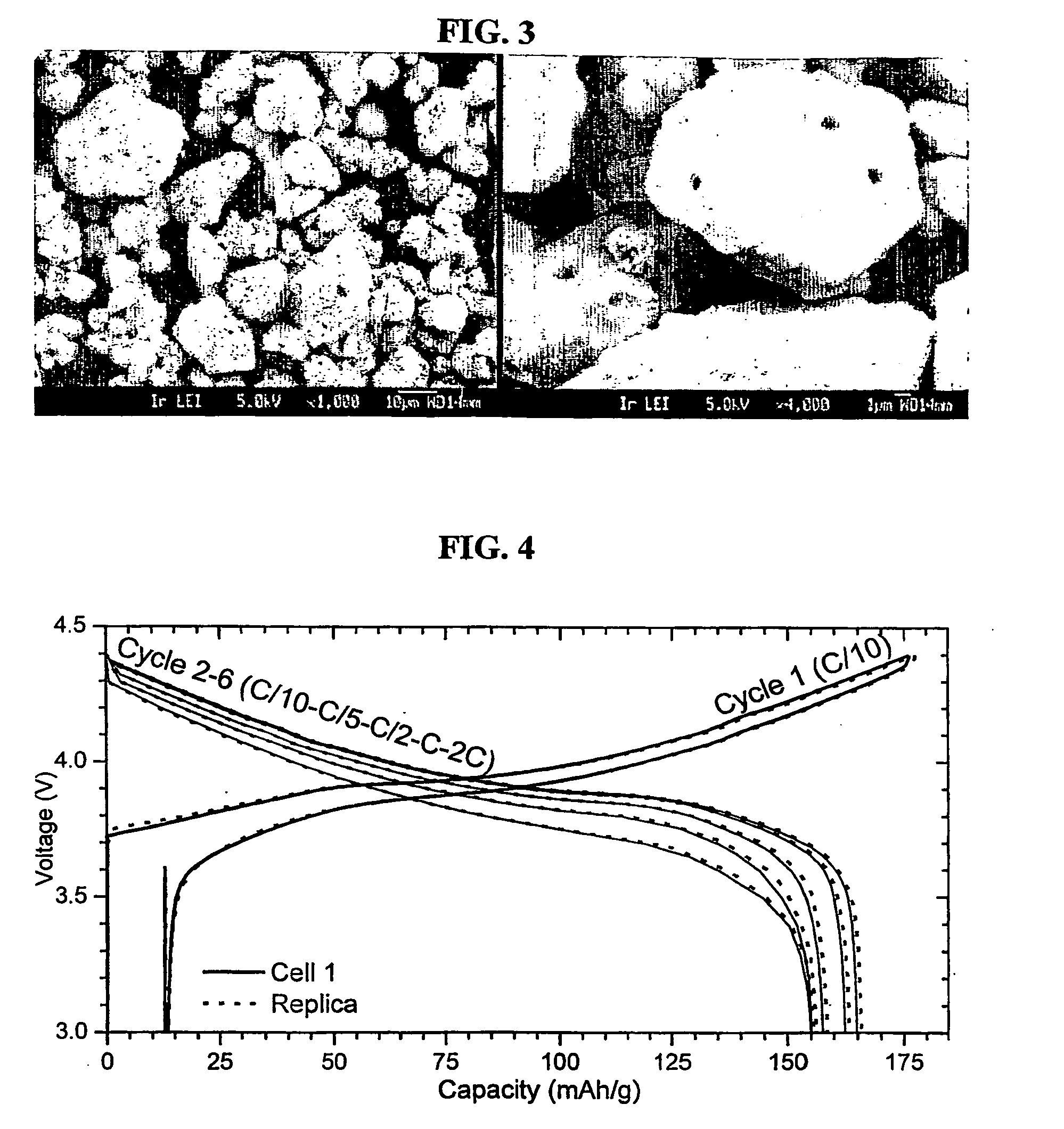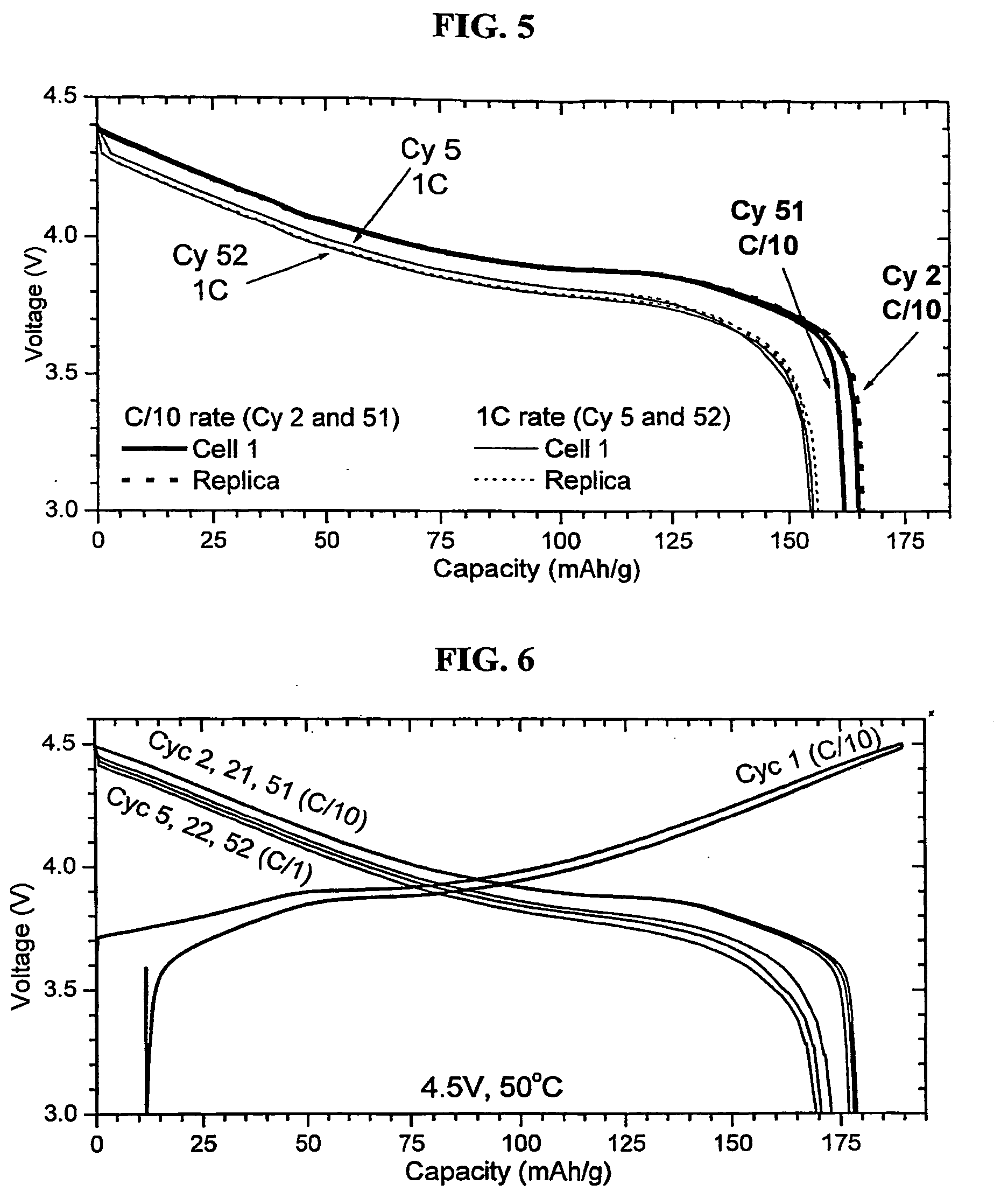Electrode active material powder with size dependent composition and method to prepare the same
a technology of active materials and powders, applied in the direction of nickel compounds, manganates/permanentates, cell components, etc., can solve the problems of unprotected licoo/sub>2/sub>2/sub>cannot be cycled at >4.3v, high capacity fading, low safety, etc., to achieve high volumetric and gravimetric energy density, high cycling stability, and low cost
- Summary
- Abstract
- Description
- Claims
- Application Information
AI Technical Summary
Benefits of technology
Problems solved by technology
Method used
Image
Examples
example 1
Preparation of a Powder, Having Particles with Size Dependent Composition
[0083] Seed particles: Commercial LiCoO2 not having a small particle size distribution, consisting of monolithic particles (not secondary particles being agglomerates of primary particles) was used as seed material. The LiCoO2 consisted of about 50% by volume of large particles of size between 10-25 my, the d50 being about 17 my, and about 50% by volume smaller particles of size between 3-10 my, the d50 being about 5 my. FIG. 1 shows a FESEM image of the applied powder.
[0084] Precipitation: 3 kg of LiCoO2 and 1.4 L of H2O were added to a 5 L reactor. A flow of 4M NaOH solution and a flow of 2M MSO4 solution (M=Mn1 / 2Ni1 / 2 “110”) were added to the reactor during rigid stirring. The temperature was kept at 95° C., the flow rates were controlled so that the pH was kept stable. After 70 minutes the precipitation was interrupted, clear Na2SO4 solution was removed from the solution, and the precipitation was continu...
example 2
[0094] A LiCoO2 powder, the powder containing a significant amount of larger (10-25 μm) and smaller particles (size 3-10 μm) was used as seed. The smaller particles had approx. 50% of the mass and they dominantly contribute to the surface area of the cathode active material. A cathode active material was prepared similar as described in Example 1 with the following exception:
(a) only 2 kg of seeds are used
(b) 0.4 mol transition metal hydroxide is precipitated per 1 mol of LiCoO2
(c) the transition metal sulfate flow contained was not “110” but “331”
(d) the amount of Li2CO3 was adjusted (0.53 mols Li per 1 mol precipitate)
[0095] As a result a cathode active material powder was achieved where larger particles had an outer and inner phase. The inner phase had a composition near to LiCoO2. The outer phase was basically LiCo1-2xMnxNixO2 with x≅0.13 . . . 0.16. Small particles (0.3. Intermediary sized particles were single phase with 0.15<x<0.3.
example 3
[0096] The cathode active material powder was prepared in the same manner as in Example 1 except that the sintering temperature was lowered to about 900° C., much less than 980° C. A cathode active material in many aspects similar to that of example 1 was achieved. The material of Example 3 was however different in two important aspects. First, the surface was rough, causing an increased surface area. Secondly, due to the less severe sintering, the surface contained less cobalt. Electrochemical testing showed high stability (less impedance built-up), and improved rate performance.
PUM
 Login to View More
Login to View More Abstract
Description
Claims
Application Information
 Login to View More
Login to View More - R&D
- Intellectual Property
- Life Sciences
- Materials
- Tech Scout
- Unparalleled Data Quality
- Higher Quality Content
- 60% Fewer Hallucinations
Browse by: Latest US Patents, China's latest patents, Technical Efficacy Thesaurus, Application Domain, Technology Topic, Popular Technical Reports.
© 2025 PatSnap. All rights reserved.Legal|Privacy policy|Modern Slavery Act Transparency Statement|Sitemap|About US| Contact US: help@patsnap.com



